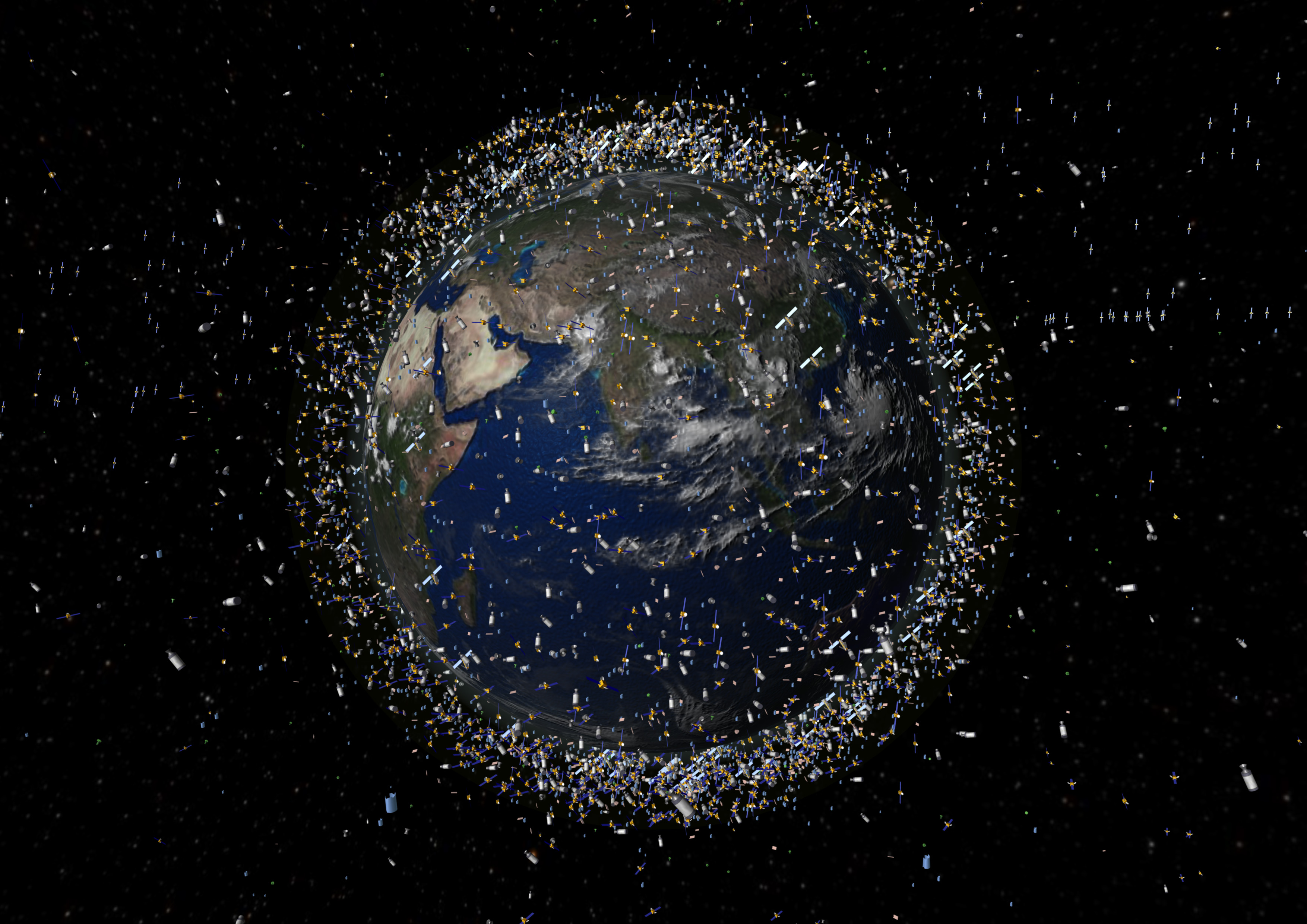On February 12, 2009, a privately owned U.S. Iridium satellite (known for providing mobile voice and communications worldwide) collided with a defunct Russian military Cosmos 2251 sattelite.
The Cosmos has been retired for ten years and is literally space junk. Among the thousands of space junk above Earth and now has added to probably even more thousands.

National Geographics Model of Space Junk above Earth
I’ve often wondered how often are these collisions around our planet happen. To tell you the truth, in this day and age, I’m surprised that a collission happened at all. Did someone fall asleep in their computer or perhaps NASA is understaffed (or underfunded) that they don’t have enough manpower to monitor these things. Also, how much crap or “space junk” is there above Earth.
And thus…thanks to National Geographic, an image of 8,000 artificial objects are orbiting the Earth. 2,500 of the objects are satellites that are working or are dead.
What truly sucks about this space junk is that it doesn’t look like my generation is going to fix that problem. They are just going to monitor it. So, essentially, any spacecraft can probably get damaged by jagged metal that may be a few inches or less than an inch but hurling through Earth’s atmosphere in who knows what speed (one article has said the space junk travels up to tens of thousands of kilometers per hour).

courtesy of www.universetoday.com
Doing some research, the European Space Operations Centre has put together a few images showcasing the space junk which is 22,240 miles above Earth.
It’s interesting, when there are oil spills or chemical spills, it’s human nature that it must be cleaned up immediately. How is it that thousands have continued to travel above Earth and yet nothing has really been done.
Granted, in the world’s current state of economy, putting money to clean up the space junk is probably not going to go well with any country. The fact that it’s in space, that would cost billions of dollars and I think it’s good to assume that no one would want to be taxed to clean that mess.
Also, many people feel that since it’s in space, it’s nothing that we have to worry about. Probably NASA and the other space agencies but for humankind, if it doesn’t immediately impact their life, then why bother right?
It’s rather unfortunate because even with all these proposals by the Inter-Agency Space Debris Coordination Committee, I’m sure there are plenty of ideas but the problem is who will be responsible for clean up and who will spend the money, it’s going to be a major issue.
Definitely an unfortunate situation that would probably be passed over to the next generation of the world and the cost to fix it many years from now will continue to grow and be out of reach. We know it’s a growing problem that has gotten even worse with this recent collision.

